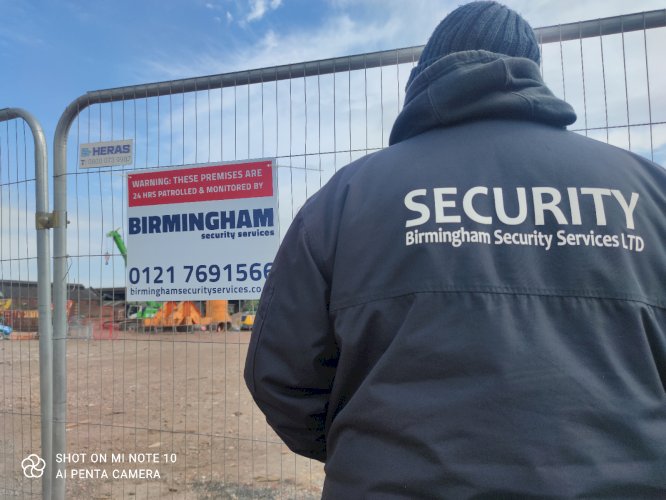Construction Site Security: How to Protect Your Site, Workers, and Equipment
2 months ago - 3 min read
Securing a construction site is essential for protecting valuable equipment, materials, and workers. With construction-related thefts and safety incidents on the rise, effective construction site security is no longer optional, it’s a necessity. A well-protected site ensures smoother operations, prevents costly delays, and enhances the overall safety and reputation of your project.
This guide outlines proven methods and modern technologies to help you secure your construction site, reduce risks, and maintain compliance with safety regulations.
Why Construction Site Security Matters
Construction sites are prime targets for theft, vandalism, and unauthorized access due to their open nature and the presence of high-value assets. Without proper security measures, contractors risk financial losses, operational disruptions, and potential safety hazards.
A strong construction security plan helps to:
- Prevent theft of tools, materials, and machinery
- Protect workers and the public from harm
- Maintain compliance with health and safety laws
- Safeguard company reputation and client trust
In short, security is an investment that pays off in reduced risk, smoother progress, and greater peace of mind.
Common Security Risks on Construction Sites
Construction sites face multiple challenges, including:
- Theft: Expensive tools and heavy machinery attract criminals.
- Vandalism: Damaged property and graffiti can delay projects.
- Unauthorized access: Intruders increase accident risks.
- Environmental damage: Flooding, storms, or fires can harm assets if not properly managed. </ul
Understanding these risks helps site managers develop targeted, cost-effective security strategies.
10 Proven Ways to Secure a Construction Site
1. Install a Strong Perimeter Fence
A solid perimeter fence acts as the first line of defense. Choose a minimum height of six to eight feet and reinforce it with anti-climb panels or barbed wire. Secure all entry and exit points with locked gates and clear warning signage.
2. Implement Access Control
Only authorized personnel should be able to enter the site. Use ID badges, electronic access cards, or biometric systems to manage who comes in and out. This helps track attendance and prevents unauthorized entry.
3. Hire Professional Security Guards
Trained construction site security guards provide on-the-ground protection. They can monitor site access, patrol the area, and respond quickly to suspicious activity—especially during nights and weekends when sites are most vulnerable.
4. Use CCTV and Surveillance Systems
Install CCTV cameras in key locations such as entry points, storage zones, and vehicle access routes. Modern systems offer night vision, motion alerts, and remote viewing, helping you monitor the site in real time and deter intruders.
5. Install Motion-Sensor Lighting
Motion-activated lighting deters trespassers by exposing movement in dark areas. Place them near entrances, fences, and equipment zones for maximum effect while saving energy.
6. Secure Tools and Machinery
Always lock away tools and small equipment after use. Use secure storage containers, heavy-duty locks, or steel storage boxes. Immobilize large machinery by removing keys, using wheel locks, or disabling ignition systems overnight.
7. Add GPS Tracking to High-Value Equipment
Fitting GPS trackers to heavy machinery allows you to monitor real-time locations and recover assets quickly in case of theft. Many systems send instant alerts for unauthorized movement.
8. Create a Comprehensive Security Plan
A written security plan should outline roles, emergency procedures, and key contact details. Review and update it regularly, especially after site changes or incidents. A well-documented plan ensures consistency and accountability.
9. Use Temporary Alarm Systems
Install portable alarms that trigger if someone enters restricted areas after hours. Wireless alarm systems are flexible, easy to relocate, and can integrate with CCTV or access control systems for full coverage.
10. Train and Involve Your Team
Security starts with awareness. Conduct regular toolbox talks to remind workers about safety protocols, equipment storage, and how to report suspicious activity. A security-conscious workforce is one of the strongest deterrents against theft and negligence.
Key Factors When Planning Site Security
Before implementing security measures, consider:
- Site size and layout: Larger areas may require more cameras and guards.
- Location: Sites in high-crime or high-traffic areas need tighter security.
- Value of assets: High-value materials and machinery need stronger protection.
- Site visibility: The more exposed your site, the higher the deterrent value of visible security measures.
By assessing these factors early, you can balance cost and coverage for optimal results.
Conclusion
Effective construction site security requires a combination of planning, technology, and human presence. From fencing and CCTV to trained guards and GPS tracking, every layer of protection helps reduce risk and improve project outcomes.
By prioritizing site security, construction companies not only protect assets and workers but also build trust, compliance, and a reputation for professionalism.
If you’re managing a construction project in Birmingham or across the UK, consider partnering with a reputable construction security company to ensure your site remains safe, compliant, and fully protected.